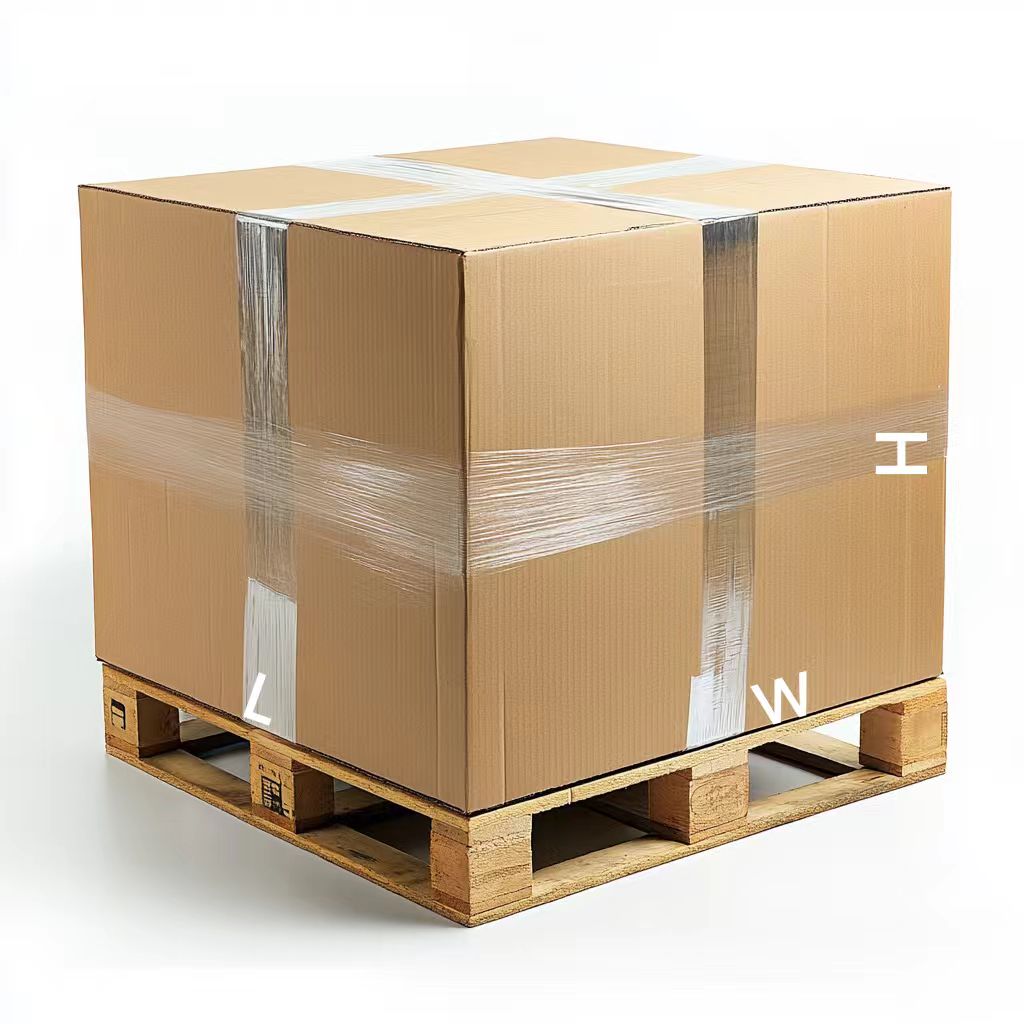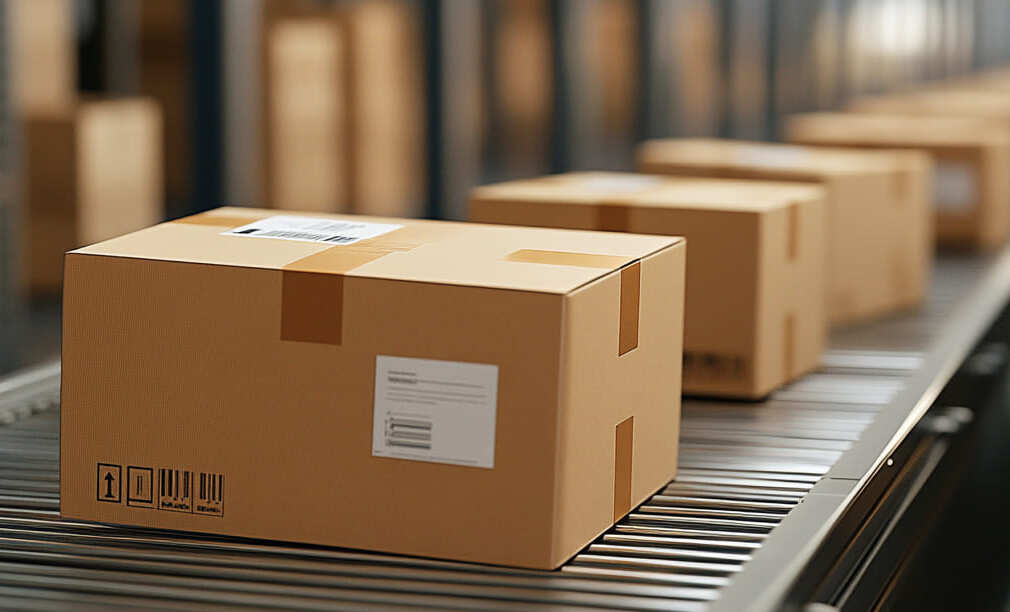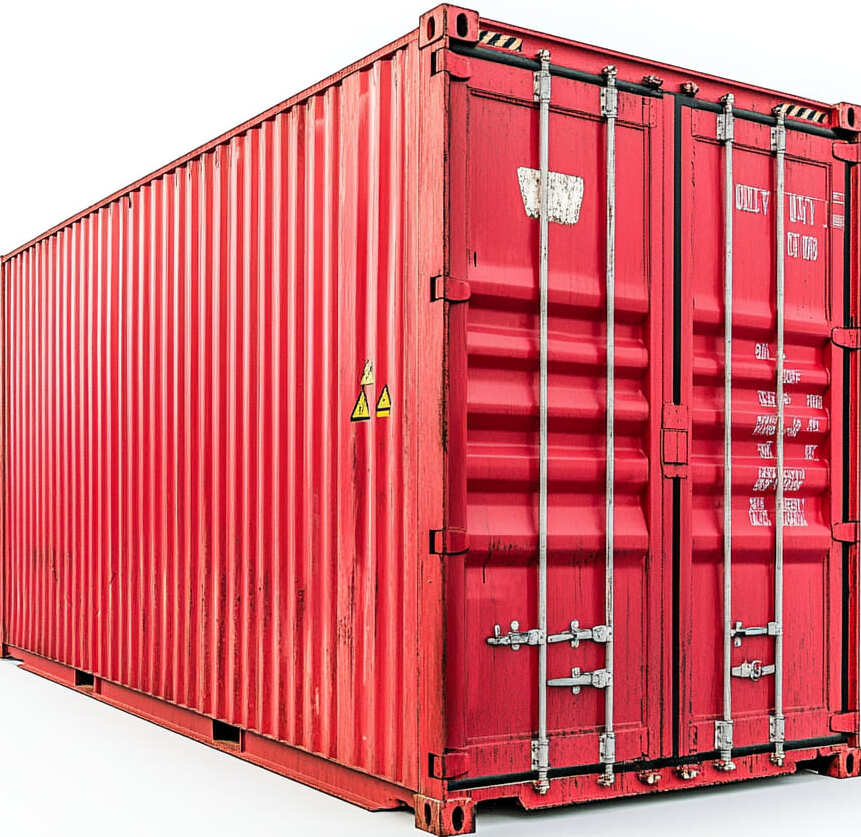In shipping, the term CBM (Cubic Meter) is important. It measures volume and is key for freight rates. It helps to calculate shipments and understand space needs. Whether shipping by land, sea, or air, it's vital for businesses and individuals to know CBM. This guide will explore CBM in shipping. It will cover its meaning, how to calculate it, and its link to other weight measures. It will also discuss its use in different shipping scenarios.

Length (cm) × Width (cm) x Height (cm) = ▁▁KG
5000/6000
Ⅰ.What CBM means in shipping.
CBM measures volume. In shipping, it is the main unit. You use it to calculate cargo volume: length x width x height. In transportation, it indicates the space a cargo or a cargo ticket takes up in a container, truck, or cargo plane. It is also an important standard for calculating the freight cost of goods.
1.The Concept of Volume in Shipping
In freight transport, volume is a key factor. The volume of a shipment influences transport costs and decides if it can be shipped. Unlike a scale that measures weight, the space occupied by the goods defines volume. For example, empty cardboard boxes and foam products are lightweight. But they take up a lot of space. Even if their actual weight is low, companies measure the cost of transporting goods in CBM units.
2.CBM as a metric for freight costs.
Freight forwarders use CBM to calculate transportation costs. CBM costs vary based on: the transport mode (air, sea, land, express), the destination, and the type of goods. For example, air transport is more expensive than sea transport, but it has less space. So, we need to be more in-depth! Understanding CBM lets us better estimate transportation costs. It can help us make decisions that fit our situation.

Ⅱ.How to Calculate CBM in Shipping
Calculating CBM is simple. Measure the shipment's dimensions. Here are the calculations for the exact volume.
1.Measuring the Dimensions
It is necessary to get precise measurements of the length, width, and height of the goods. The units of measurement are generally centimeters and meters. People use meters for sea and land transportation. Air and express transport use centimeters.
2.Applying the Formula
After measuring the goods' feet, use this formula to calculate the CBM: 1 CBM = length (m) × width (m) × height (m). If the surveyor gives centimeters, convert to meters: 1 m = 100 cm.
3.Calculating CBM for Many Items
If a batch of goods has many pieces of the same carton size, use this formula to get the best CBM: volume of goods x a single carton of goods x number of pieces. But this size is not the most accurate. There is an error in the actual. Generally, they pack goods together. Someone measures the length, width, and height to get the CBM. This is more in line with the actual situation.
4.Calculating CBM for Irregularly Shaped Packages
For shipments with irregular shapes, the process of calculating CBM is a bit more complex. In such cases, you should measure the longest length, longest width, and longest height. The CBM is then calculated using the formula:
CBM = Length (max) x Width (max) x Height (max)
For cylindrical items, the formula to calculate CBM is:
CBM = π × height × radius²
where π is about 3.14 or 22/7. The radius is the distance from the center of the circle to its edge (or half the diameter).

Ⅲ.CBM and Different Shipping Modes
CBM's calculation and use can vary by transportation mode. This document will discuss how air freight, sea freight, and land freight use CBM.
1.Air Freight
In air transport, we calculate CBM to find the billable weight. Billable weight is the greater of actual weight or volumetric weight. The volumetric weight is 1:167 KG, so 1 CBM = 167 KG. If the goods are 2 CBM and weigh 200 KG, the billable weight is 2 CBM * 167 KG = 334 KG.
2.Sea Freight
Ocean freight also uses CBM to calculate costs. In LCL, the calculation team bases the cost on the goods' CBM. In LCL, they bill cargo under 1 CBM at 1 CBM. For cargo over 1 CBM, we use the actual volume. In ocean freight, the weight-to-volume ratio is 1 CBM:1000 KG. Some routes use 1 CBM:500 KG. The U.S. route is 1 CBM:363 KG for two-way transport. For FCL, use the container's volume and the cargo's weight to maximize space and cut costs.
3.Land Freight
In land freight, CBM calculates a shipment's volume for storage and transport. The conversion rate from CBM to kilograms can vary depending on the carrier and the type of vehicle used. For example, in some cases, 1 CBM may be equal to 333 kg for road freight.
Knowing the CBM of your land shipment helps to:
Choose the right vehicle size.
Estimate transportation costs.
CBM and Other Weight Measurements
In shipping, several weight measurements relate to CBM. Understanding the differences between these measurements is crucial for accurate freight cost calculations.

Ⅳ.CBM and Other Weight Measurements
We calculate volume weight, also called volumetric weight, from the goods' dimensions. For example, a pallet of plastic balls is very light but takes up a lot of space. The volume weight is in CBM.
In air transport, the volume-to-weight ratio is 1:167 kg. In sea transport, it is 1:1000 kg. The higher of the volumetric weight and the actual weight is the billing weight.
1.Dimensional Weight
We calculate volume weight, also called volumetric weight, from the goods' dimensions. For example, a pallet of plastic balls is very light but takes up a lot of space. The volume weight is in CBM.
In air transport, the volume-to-weight ratio is 1:167 kg. In sea transport, it is 1:1000 kg. The higher of the volumetric weight and the actual weight is the billing weight.
2.Actual Weight
Actual weight is the weight of the goods on the scale. To set the freight rate, compare the actual and volumetric weights. The larger will be the billing weight. If the actual weight is more than the volumetric weight, the freight rate will be based on the actual weight.
3.Chargeable Weight
The billable weight is the final shipping weight of the goods when shipped. It is the larger of actual weight and dimensional weight. The actual weight is 400 kg, and the volumetric weight is 500 kg. We will use the billing weight of 500 kg to calculate the freight.

Ⅴ.Types of Containers and Their CBMs
Containers are vital to shipping. So, knowing their CBM capacity is key to efficiency. Here are the most common container types and their CBM capacities.
1.20-Foot Container
A 20-foot container has a usable capacity of approximately 26-28 CBM. Its dimensions are as follows:
● Length: 5.898 m
● Width: 2.352 m
● Height: 2.393 m
It has 146 square feet of floor space and 1,172 cubic feet of volume. It can hold ten standard pallets or 12 Euro pallets, depending on the pallet type. It cannot stack them.
2.40-Foot Container
40-foot container has a usable capacity of approximately 56 - 58 CBM. Its dimensions are as follows:
● Length: 12.00 m
● Width: 2.34 m
● Height: 2.38 m
It can hold about 25 Euro pallet stacks as long as the load isn't hanging over the sides. For the standard American pallet size, it can hold twenty-one pallets as long as the load isn't hanging over the sides.
3.40-Foot High Cube Container
40-foot High Cube container has a usable capacity of approximately 60-68 CBM. Its dimensions are as follows:
● Length: 12.00 m
● Width: 2.34 m
● Height: 2.69 m
This container is ideal for voluminous but light cargo.
4.45-Foot High Cube Container
A 45-foot High Cube container has a usable capacity of approximately 72 to 78 CBM. Its dimensions are as follows:
● Length: 12.51 m
● Width: 2.45 m
● Height: 2.69 m
This container is also suitable for large and bulky shipments.
Note that a container's capacity is only about 80% of its maximum. This is due to unusable space from the shape and size of the items, their packaging, and their positioning.

Ⅵ.Examples of CBM Calculation
To better understand CBM in shipping, let's look at some examples.
1.Example 1: Ocean Freight LCL Shipment
You are sending an LCL shipment by sea freight. The package dimensions are 3 m x 3 m x 1 m.
⑴. Calculate the CBM:
CBM = 3 x 3 x 1 = 9 m³
Let's say the gross weight is 7 tons (7000 kg). Since the shipment volume (9 m³) is higher than the weight (7000 kg), the ocean freight will be based on CBM. For LCL ocean freight, the freight is charged by volume when the weight is less than one ton (1000 kg per CBM).
⑶. Calculate the freight cost:
The sea freight rate is USD50 per cubic meter per ton, and the freight rate is USD50 x 9 = USD450.
2.Example 2: Air Shipment
⑴.For air shipping
For air shipping, consider the following: Package dimensions: 150 cm x 100 cm x 100 cm. First, convert the dimensions to meters.
Length = 150 cm = 1.5 m
Width = 100 cm = 1 m
Height = 100 cm = 1 m
CBM = 1.5 x 1 x 1 = 1.5 m³
⑶.Calculate the dimensional weight:
The dimensional factor for air freight is 1:167. So, the dimensional weight = 1.5 x 167 = 251 kg
⑷.Consider the actual weight:
Let's say the gross weight is 150 kg. The chargeable weight is the dimensional weight, 251 kg. It is greater than the actual weight of 150 kg.
⑸.Calculate the freight cost:
If the freight rate is $6.50 per kilogram, the freight cost would be 251 x $6.50 = $1,631.50
3.Example 3: Irregularly Shaped Package
For an irregularly shaped package, let's consider a cuboid with dimensions 10 cm (L), 8 cm (W) and 5 cm (H).
Not possible to remove the adverb.
For a cuboid with dimensions of 10 cm long, 8 cm wide, and 5 cm high, consider an irregularly shaped package.
⑴. Convert the dimensions to meters:
L = 10 cm / 100 = 0.1 m
W = 8 cm / 100 = 0.08 m
H = 5 cm / 100 = 0.05 m
⑵. Calculate the CBM:
CBM = 0.1 x 0.08 x 0.05 = 0.004 m³
Ⅶ.FAQs about CBM in shipping
⒈How many kg make 1 CBM?
The CBM in kilograms depends on the mode of transportation. For sea shipping, 1 CBM = 1000 kg. For air shipping, 1 CBM = 167 kg. For road, in some cases, 1 cubic meter may be equal to 333 kg.
Yes, CBM is the same as M3 (cubic meters). They are different notations for the same unit of measurement.
⒊How do you convert CBM to m³?
Since CBM and M³ are the same, we do not need to convert. To calculate the CBM from a package's dimensions, use this formula: Length x width x height = CBM. This is also the formula for M³.
⒋How much can a 20-feet container hold?
The 20-foot container can hold 26-28 CBM. It can hold up to 10 standard-size TOs without stacking, depending on the 20' GP.






















